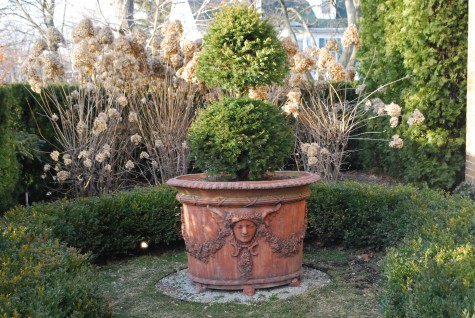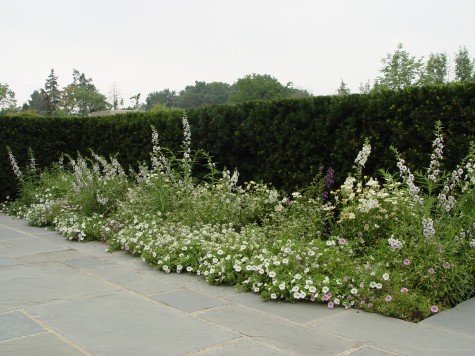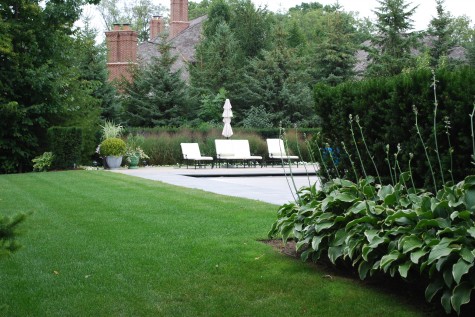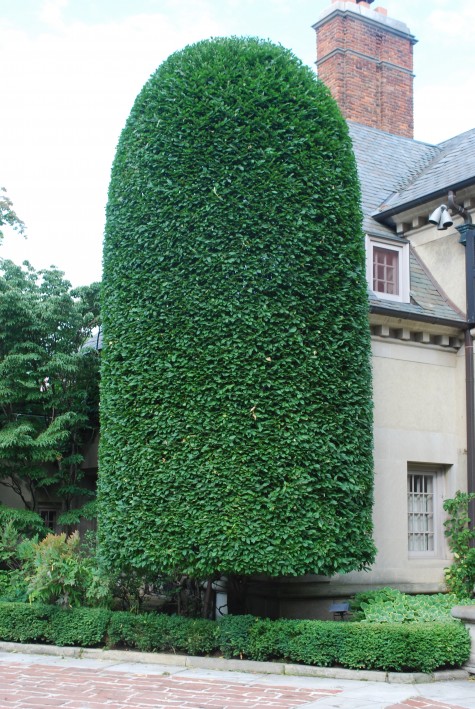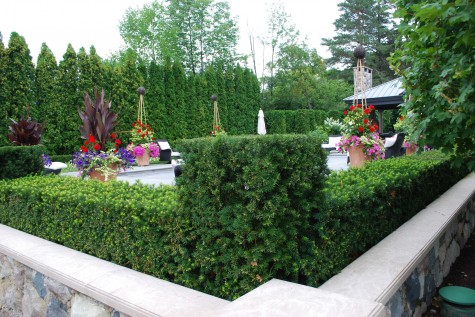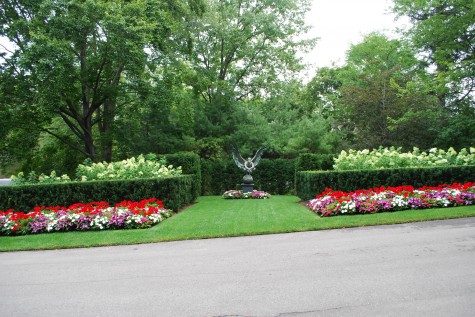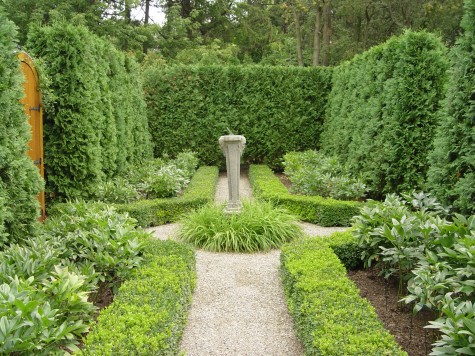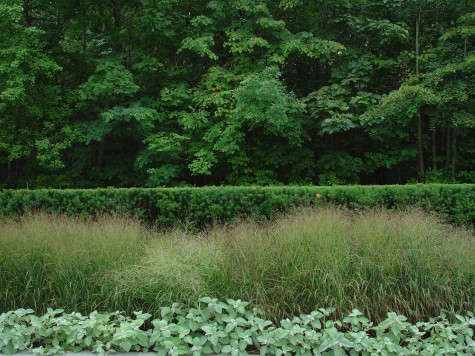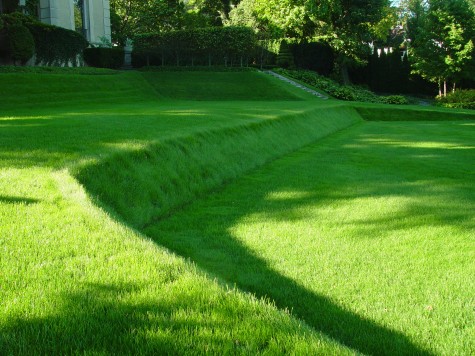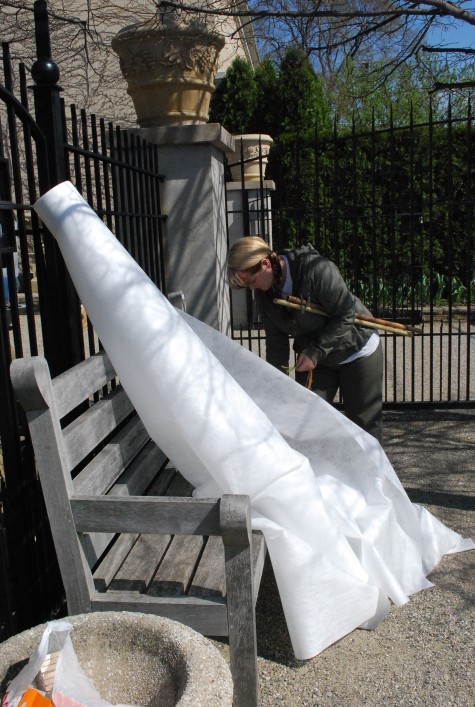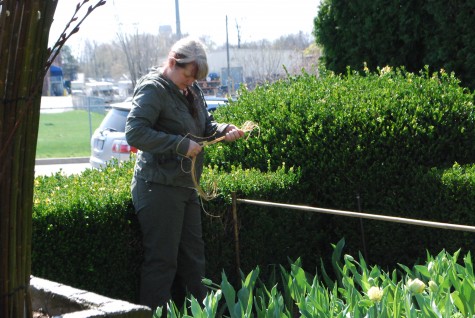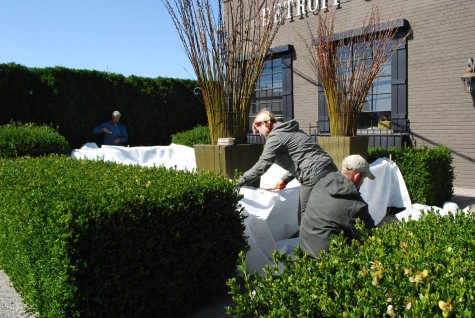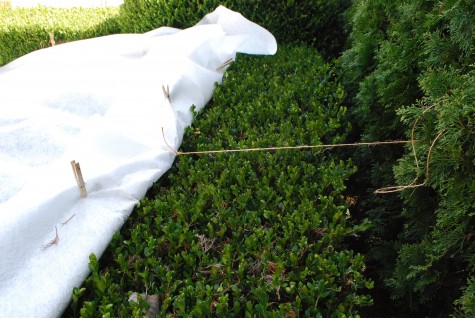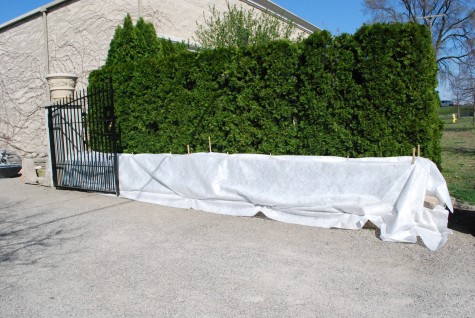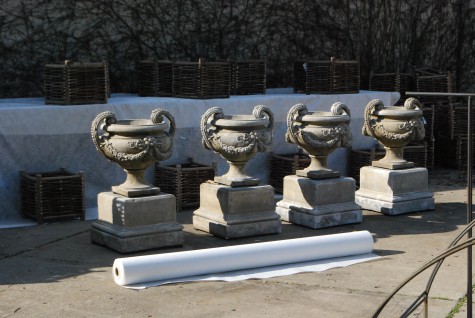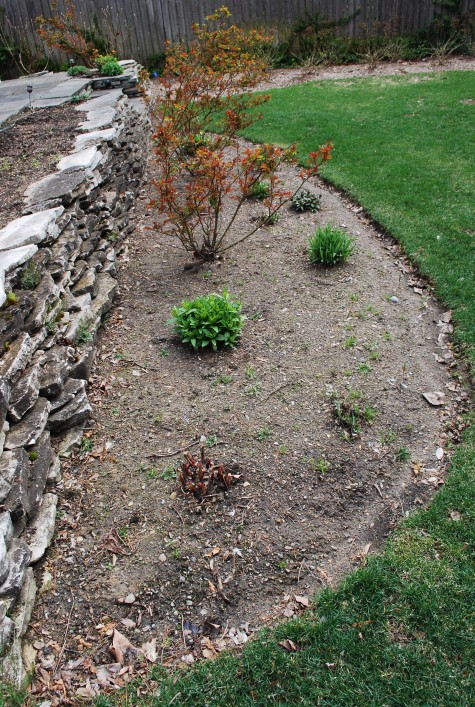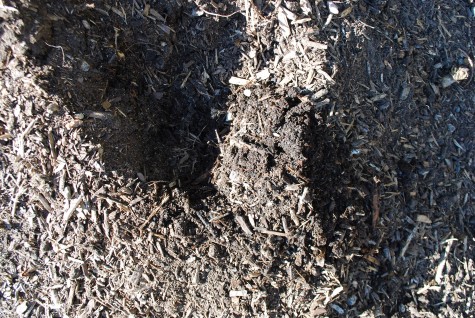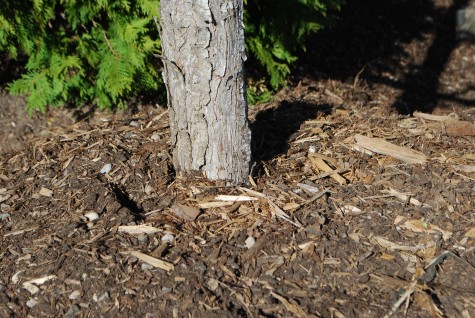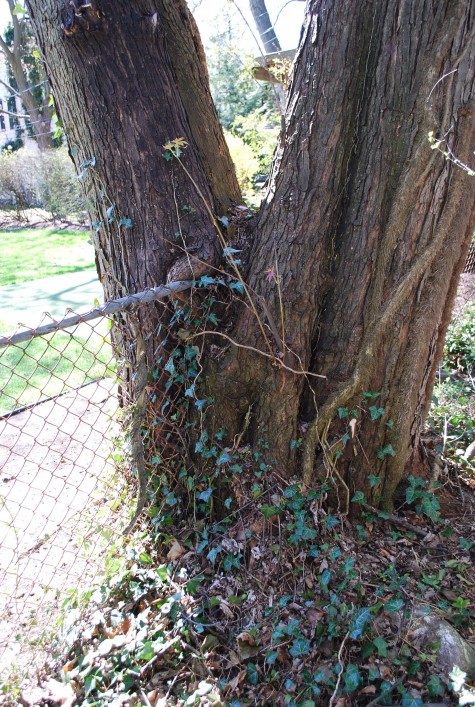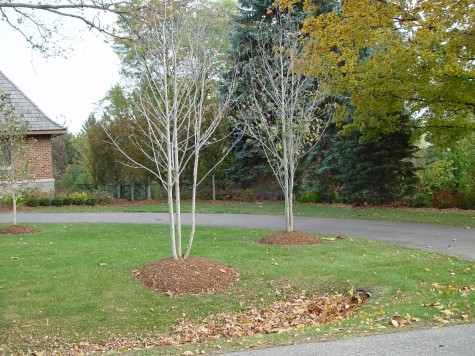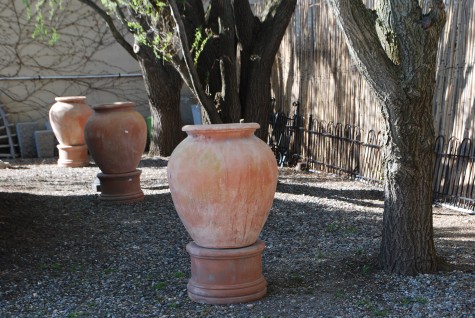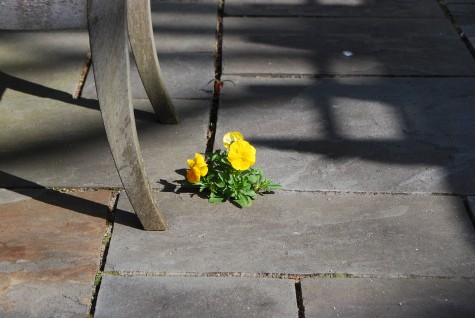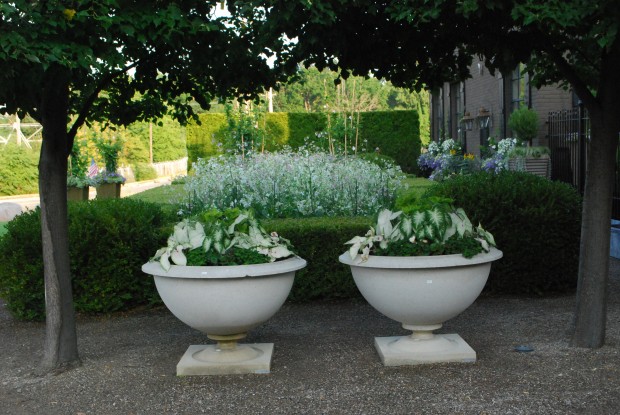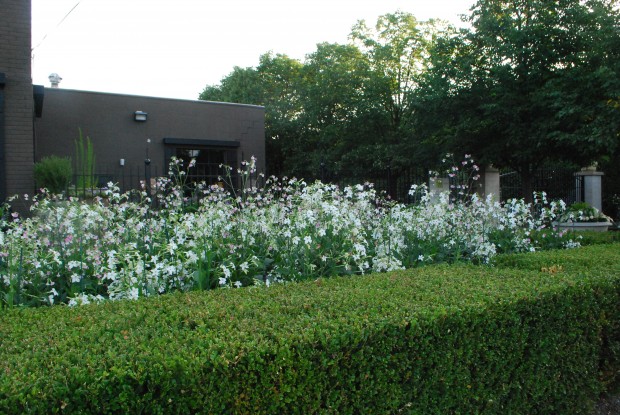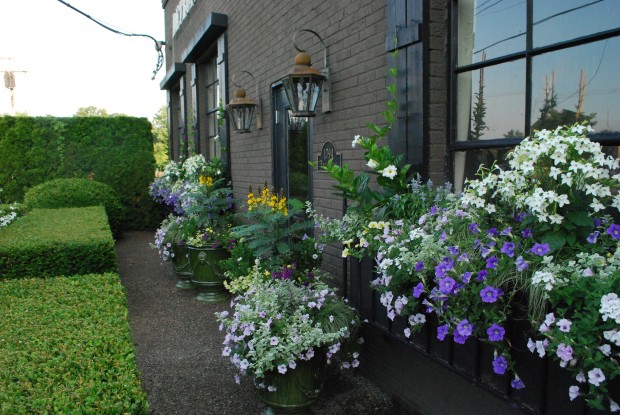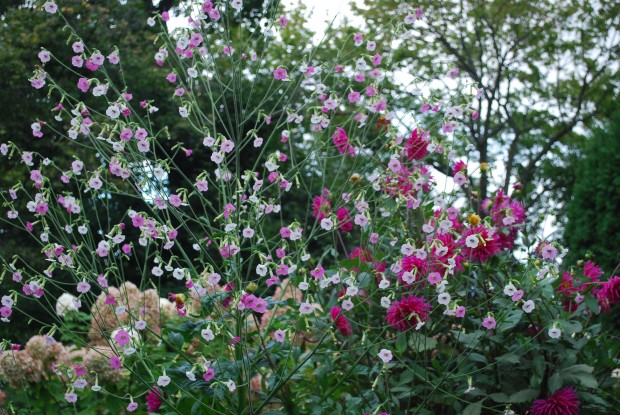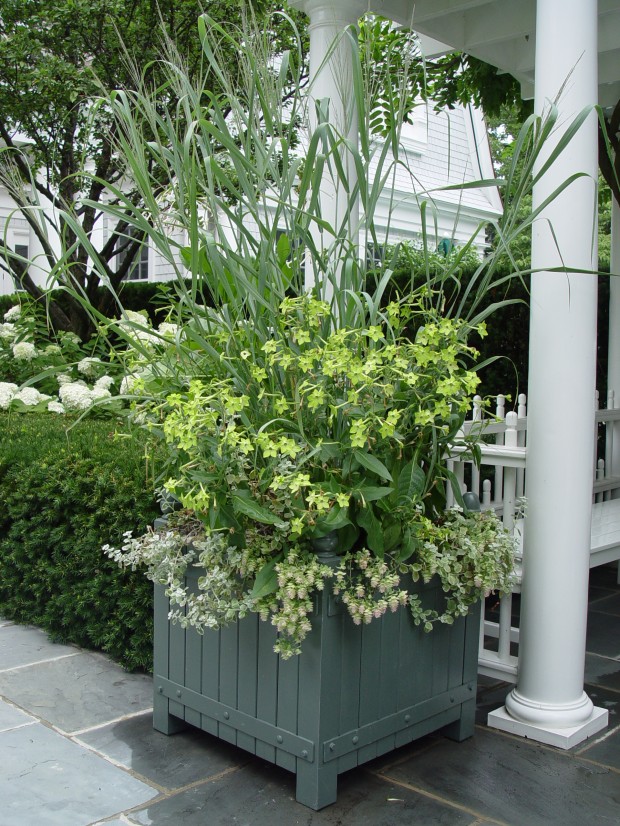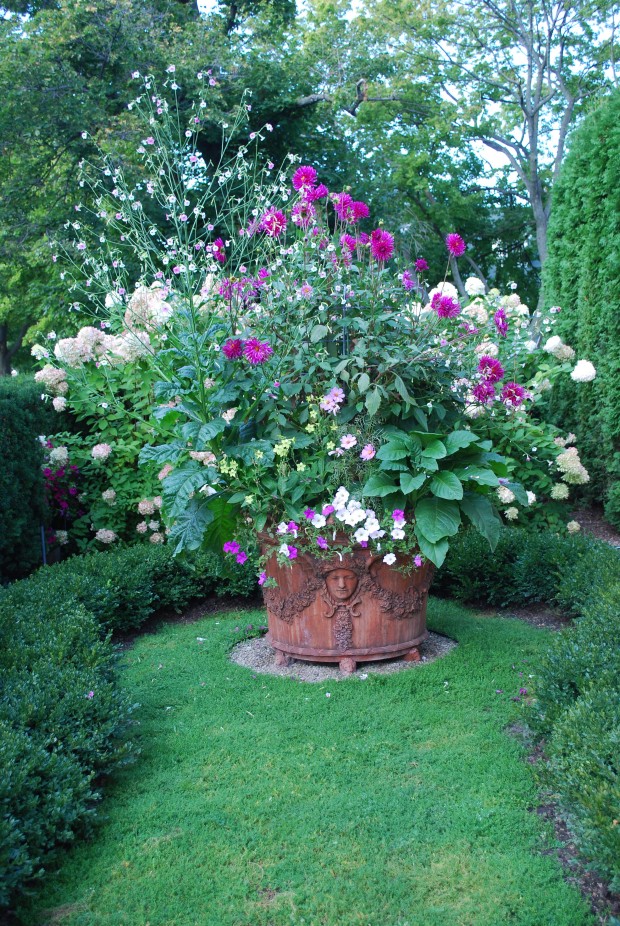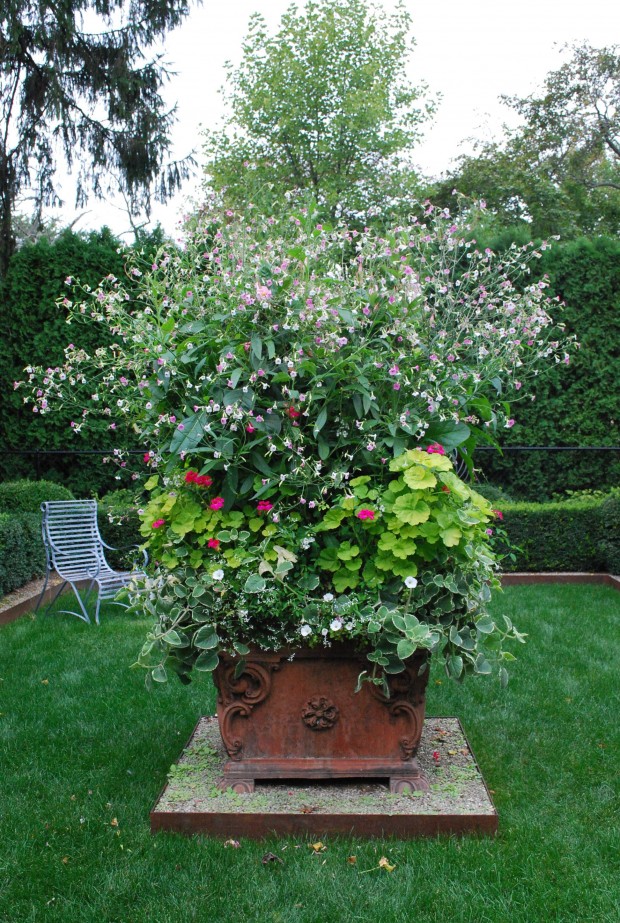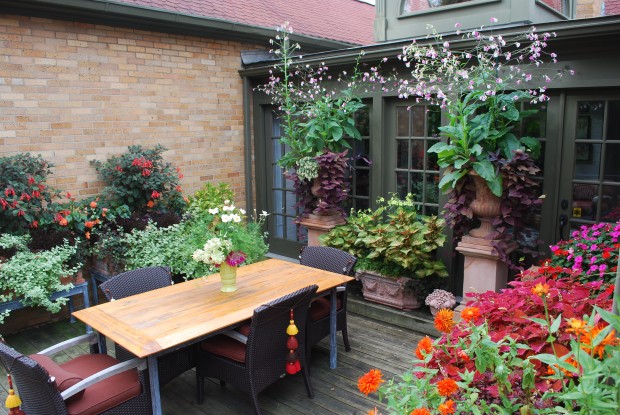The structure afforded from evergreen plantings is never more apparent in my zone than in the month of March. Debris litters the ground in the garden, no matter the quality of my fall cleanup. The hydrangea heads have been blown off their stems by gusting winds. There are places where the visuals are not the best. But my evergreens go a long way towards providing my winter landscape with structure. This is the third season for this double ball yew topiary in this concrete pot. The boxwood semicircle, the topiary and the hydrangeas organize this part of my garden in every season.
Evergreens planted in pots is a beautiful look, but they require special care. They ask for pots of a good size. Beware evergreens that have small rootballs. Healthy and well grown evergreens oftentimes have rootballs wider than their tops. They need water early in the spring, late in the fall, and perhaps in the winter. They can be worth the trouble-what they do for the entrance to this pool house is considerable. They soften and compliment the architecture. They bring a sense of the garden all of the way up the stairs. They are of a size and shape which is proportional to the hard structure. They make the entrance visually welcoming. 
Some evergreens are amenable to formal pruning. Boxwoods tolerate precisely geometric pruning quite well. Heavy snow can burden formally pruned boxwoods such that branches crack, leaving the plant vulnerable to fungal infections. I make an effort to keep the snow load on mine at a minimum. This formally structured garden is beautiful no matter the season, or the weather. The enclosure provided by the arborvitae, and the yews makes this living world complete unto itself.
Annual borders can be subtle, wispy, rowdy or structured. Annuals cannot provide much structure to a garden, but they certainly benefit from it. The formally pruned yew hedge behind this garden provides a strikingly simple and effective backdrop for a collection of delicately colored and structured flowers. This hedge of evergreens is darkly beautiful in shape, size and mass, but it is the contrast of the annual border that so strongly makes that point.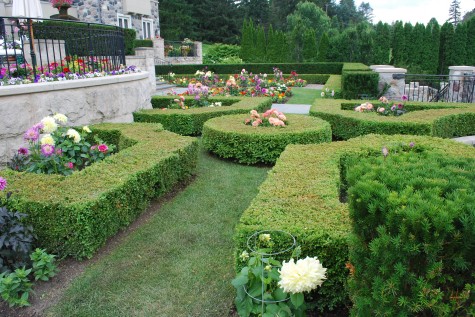
Boxwood has been planted in shapes both rectilinear and curved for centuries. One boxwood on its own can be quite lovely, but many planted to form shapes gives the collection a sculptural quality. The grass in the foreground, the yews in the mid ground, and the arborvitae in the background create a landscape with four distinct layers. The flowers provide considerable seasonal interest, but the landscape composition is still as strong visually in the winter months.
Large evergreens do a great job of screening out untoward views. They can provide a landscape with a sense of privacy. The yews at the lower level provide additional privacy to anyone seated in the garden. The pool and terrace are not completely enclosed; the wide opening is an invitation to a lake view not pictured here. The transition from bluestone terrace to lawn helps a highly structured landscape breathe.
I planted this carpinus as an 8 foot tall tree when I was young. Its mature size and formal shape is stunning. Carpinus is not evergreen, but its leaves hang on quite late and on into the winter. Sometimes they do not drop until they are pushed off the branches by the new season’s emerging leaves. The boxwood hedge in front provides a little structure which helps the ground the tree. The trunk is virtually invisible, given the dense shade under the bottom leaves. Without the boxwood, the tree would appear to be floating.
This yew hedge repeats the structure of the wall and its limestone cap. The repetition of the shape of the wall with a hedge somewhat taller than the wall organizes the pool terrace garden. The pots are filled with many kinds of annuals in a loose and flowing way. The structure provided by the evergreens highlights those plantings. From outside the pool terrace, the wall seems all the more important visually for its yew lining.
A sculpture is given special visual prominence in a landscape by the evergreens that surround it. The tops of the yews are being pruned with the horizon, and not the grade of the driveway. It will take a few more years before the hedge is completely level. Standing at the entrance to this garden, there is much less of a sense of a sloped space.
This small private garden is completely walled by evergreens. The boxwood provides interest on the lower level, and makes much of an antique sundial. The peonies bloom but for a short time in the spring, but their big glossy leaves are a compliment and contrast to the evergreens all summer long. I would doubt there are many visitors here in the winter, but it is an enchanting secret garden in the summer.
In this instance, the yew hedge provides a graceful transition from the mature deciduous trees in the background. Though the panic grass obscures 3/4’s of the height of those yews, it lends its weight to the panic grass hedge. That hedge has a very prominent role in the winter landscape, as the grasses are cut to the ground, and the blue grey plectranthus succumbs to the first frost.
Grass does not immediately come to mind when one thinks of evergreens, but in my zone it is green most of the year. Though it grows beneath your feet, it can be a very important element to the structure of a landscape.
